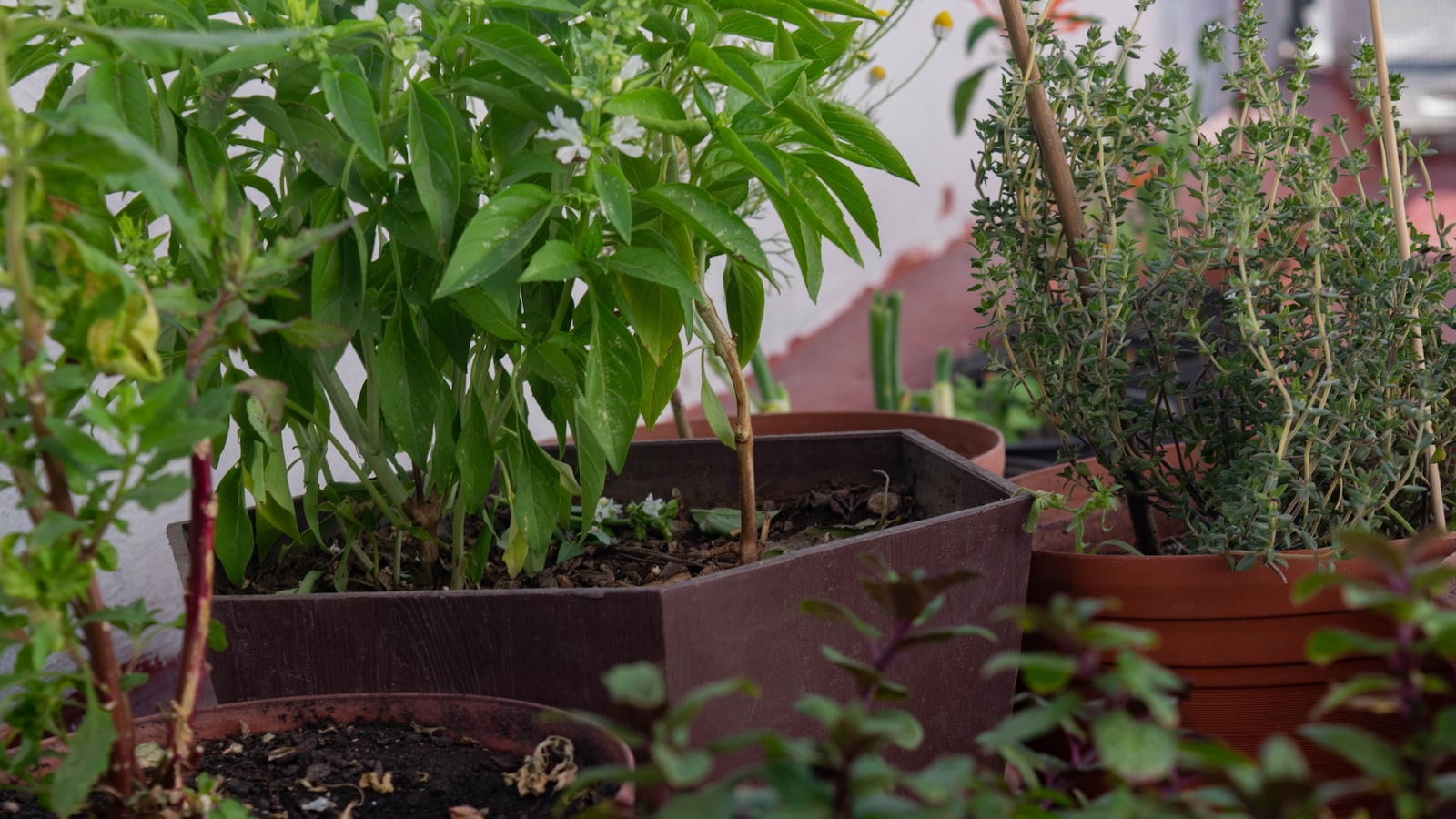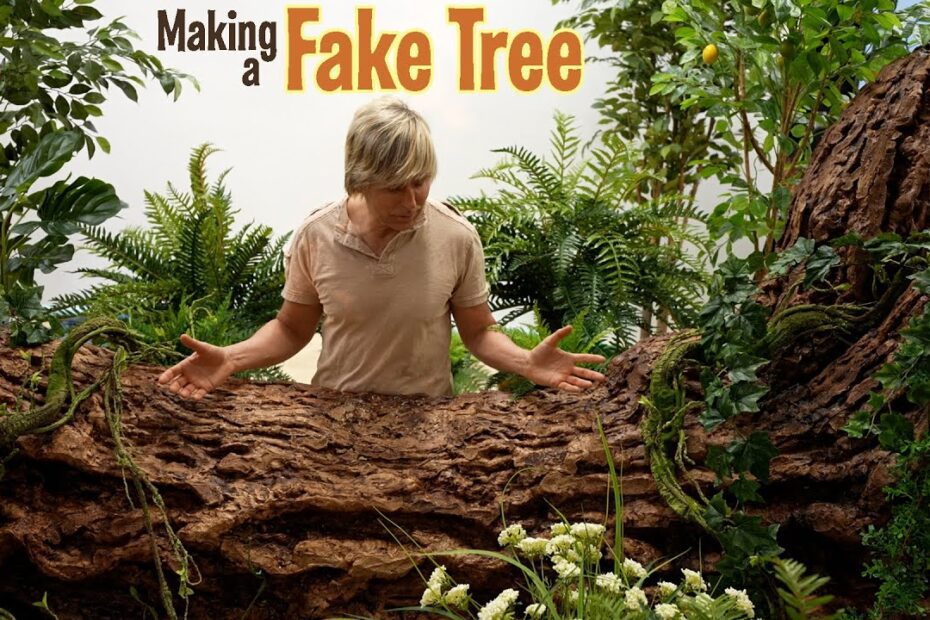Unleash your imagination and venture into the enchanting world of faux foliage! Whether you’re looking to add a touch of nature to your urban oasis or dreaming of whimsical decor for a theatrical production, learning how to make fake trees is an artistic journey begging to be explored. With a bit of creativity, resourcefulness, and a dash of green magic, you can transform bare corners into vibrant green retreats that even Mother Nature herself would applaud. So roll up your sleeves and prepare to embark on an extraordinary adventure where creativity, craftsmanship, and nature-in-disguise intertwine to bring you the secrets of creating your very own artificial woodland wonders.
Choosing the Right Materials for Crafting Artificial Trees
Crafting artificial trees can be a fun and creative project that allows you to bring the beauty of nature indoors without the hassle of maintaining live plants. When it comes to making fake trees, choosing the right materials is crucial to achieving a realistic and long-lasting result. Here are some tips and features to consider when selecting materials for your artificial tree crafting project.
-
Durability:
- Opt for sturdy materials that can withstand wear and tear, such as high-quality synthetic fibers or vinyl.
- Look for materials that are UV resistant to ensure the color won’t fade over time when placed near windows or exposed to sunlight.
-
Realistic appearance:
- Choose foliage that closely resembles the texture and color of real tree leaves. This could include silk or polyester leaves with intricate details and natural-looking veins.
- Consider using materials with different shades of green and various leaf shapes to mimic the natural variation found in real trees.
-
Easy maintenance:
- Select materials that are easy to clean and maintain, such as dust-resistant foliage that can be wiped clean with a damp cloth or feather duster.
- Avoid materials that easily shed or accumulate dust, as this may detract from the overall appearance of your artificial tree.
In addition to these tips, ensure you have the necessary tools and equipment for assembling your artificial tree. Some common materials you might need include a sturdy base or pot for stability, wire or floral tape for shaping and supporting branches, and a strong adhesive to secure foliage to the branches. Don’t forget to let your creativity shine through as you select materials and bring your artificial tree to life. Happy crafting!

Building the Base Structure: Techniques and Tips for Sturdiness
When it comes to creating fake trees, building a sturdy base structure is crucial for ensuring their longevity. Whether you are crafting a faux forest for a theatrical production or simply want to add a touch of greenery to your home, mastering the techniques and tips for sturdiness is key. By following these suggestions, you’ll be well on your way to creating realistic and durable artificial trees that will stand the test of time.
To begin, consider using wire as the foundation for your tree. This flexible material allows you to shape and mold your tree trunk and branches to your desired specifications. Start by forming a sturdy base using thick wires, ensuring that it can support the weight of your tree. From there, create a natural-looking trunk by twisting thinner wires together, adding texture and dimension. Remember to use pliers to secure your wire connections, providing added stability to your structure. For added support, wrap the wires with brown craft paper or floral tape to give your tree a more authentic appearance.
In order to achieve a truly realistic look, it’s important to pay attention to the details. Consider adding small branches off of the main trunk, varying their lengths and angles to mimic the organic growth patterns of real trees. You can create these branches using a combination of wire and wooden dowels, attaching them securely to the trunk. To add foliage, attach artificial leaves or greenery to the branches using hot glue or floral wire. Alternatively, you can create leaves from fabric or paper and attach them individually for a more natural look. Whatever materials you choose, remember to distribute them unevenly to create a visually appealing and lifelike tree.
Features/Tips Table:
| Feature/Tips | Description |
|---|---|
| Use wire as a foundation | Flexible and easy to shape, wire provides a sturdy base for your fake trees. |
| Secure wire connections with pliers | Using pliers to secure wire connections ensures a stable and durable structure. |
| Vary branch lengths and angles | Mimic the natural growth patterns of real trees by incorporating branches of different lengths and angles into your design. |
Creating fake trees can be a fun and rewarding endeavor. With the right techniques and attention to detail, you can build a base structure that is sturdy and realistic. Remember to experiment with different materials and have fun in the process. Soon enough, you’ll have a collection of stunning artificial trees that will add a touch of nature to any space.
Imitating Realistic Foliage: Artful Approaches and Creative Tricks
In the world of art and set design, creating realistic foliage is a skill that truly elevates the final result of any project. Whether you are working on a theatrical production, a film set, or simply looking to add a touch of nature to your home decor, mastering the art of imitating realistic foliage is key. Although the task may seem daunting at first, armed with a few artful approaches and creative tricks, you can achieve stunning results that will leave everyone wondering if your trees are real or fake.
One of the most effective techniques for crafting lifelike trees is to start with a solid base. Consider using a sturdy wire frame or armature to create the structure of your tree. This will provide stability and allow you to shape and mold your foliage around it. Choose materials such as floral tape, paper mache, or foam to build up the body of the tree and create a realistic trunk and branches. As you move on to adding the leaves, consider using a variety of materials to achieve different textures and colors. You can cut out leaf shapes from cloth, paper, or even plastic, and attach them to the branches using glue or wire. Blend different shades of green together to mimic the natural variation found in real foliage. Don’t forget to add some brown and yellow tones for a more authentic look.
Now let’s delve into some features and tips to help you perfect your faux trees. Here is a handy table that highlights some key elements to consider when imitating realistic foliage:
| Feature/Tips | Description |
|---|---|
| Layering technique | Build depth and dimension by layering foliage materials, starting with larger leaves at the bottom and gradually adding smaller ones towards the top. |
| Natural references | Study real trees and their foliage to draw inspiration for color palettes, leaf shapes, and branching patterns. |
| Weathering and aging | Add realistic touches by mimicking the effects of weathering and aging on the leaves and trunk, such as adding patches of lighter or darker colors and subtle texture. |
By employing these artful approaches and creative tricks, you can create stunning fake trees that will fool even the keenest observer. So, go ahead, unleash your creativity, and bring the beauty of nature indoors with your very own handmade foliage masterpieces.
Finishing Touches: Enhancing Authenticity with Skillful Detailing
Enhancing the authenticity of any project can truly make it stand out. When it comes to creating fake trees, skillful detailing is the key to achieving a natural and lifelike appearance. Adding those finishing touches can make all the difference in transforming a simple imitation into a stunning piece of art.
One of the first steps in creating a realistic fake tree is to focus on the details. Pay close attention to the texture of the bark and the shape of the leaves or needles. Using various materials such as polymer clay or textured paints can help achieve the desired effect. Bold strokes and careful shading can mimic the natural patterns found in real trees, adding depth and character to your creation.
Another crucial aspect to consider is the color scheme. Researching different tree species and their foliage will provide inspiration for creating a lifelike color palette. Incorporating a variety of hues, including shades of green, brown, and even hints of red or yellow, will add depth and dimension to your fake tree. Don’t forget to experiment with different shades of paint or dyes to achieve a more natural and realistic look. Remember, nature is full of beautiful variations, so don’t be afraid to get creative and try new color combinations.
| Features | Tips |
|---|---|
| Texture of bark | Use polymer clay or textured paints for a realistic effect. |
| Leaves or needles shape | Carefully shape and position leaves/needles to mimic natural patterns. |
| Color palette | Research tree species to create a lifelike color scheme using paint or dyes. |
By paying attention to these skillful detailing techniques and adding those finishing touches, your fake trees can become captivating and believable works of art. Discussing your methods and sharing ideas with fellow artists or enthusiasts can also provide valuable insights to further enhance your creations. So, go ahead, let your creativity shine, and marvel at the authentic beauty you can achieve with skillful detailing.
Frequently Asked Questions
Q: How can I create my own artificial forest at home?
A: Transform your living space into a whimsical woodland with these simple steps to make fake trees!
Q: What materials do I need to construct lifelike artificial trees?
A: Gather these elemental supplies: wire, foam, paint, and a dash of imagination!
Q: Is it difficult to craft fake trees that look convincingly real?
A: Fear not, fellow tree enthusiast! With a bit of patience and passion, you can easily craft fake trees that will have Mother Nature herself fooled! As we bid farewell to this whimsical journey into the realm of artificial foliage, we are left with a newfound appreciation for the art of deception in nature. Crafted with tender care, these faux arboreal wonders remind us of the limitless possibilities and creativity that mankind possesses.
As we conclude this guide on how to make fake trees, let us not forget that such creations serve a purpose beyond their aesthetic appeal. They symbolize our timeless quest to bridge the gap between nature and modernity, offering solace to those craving the tranquility of lush greenery in the concrete jungles we inhabit.
While crafting these ethereal replicas may require time, patience, and a touch of ingenuity, let us never overlook the beauty that arises from the human ability to mimic and reimagine nature’s splendor. With every painstaking detail and intricately placed leaf, we are granted an opportunity to revel in the marvels of nature’s design – and to reimagine it as our own.
Whether you embark on this journey to adorn a lifeless corner with everlasting greenery or to bring a touch of whimsy into your surroundings, remember that the art of fakery, when tasked with celebrating the magnificent beauty of our living earth, introduces a touch of enchantment into our lives.
So, let us embrace the allure of artificial trees, rejoicing in their ability to ignite our imagination and capture the essence of nature’s majesty. As we stand in awe, surrounded by these remarkable replicas, we come to understand that there’s a little bit of magic in even the most convincing fake.
May your creations transport you to enchanted forests, where dreams intertwine with reality, and may your fingertips continue to bring life to those seemingly inanimate branches. Into the realm of counterfeited nature, we bid you adieu, urging you to seek solace and wonderment in the authenticity of the artifice.
Farewell, dear reader, and may your journey through the labyrinth of creativity and craftsmanship never cease to astound.
- When to Put Weed and Feed on Lawn in Michigan - October 16, 2023
- When to Fertilize Potatoes Plants - October 16, 2023
- Can You Plant Clover in the Spring - October 16, 2023

